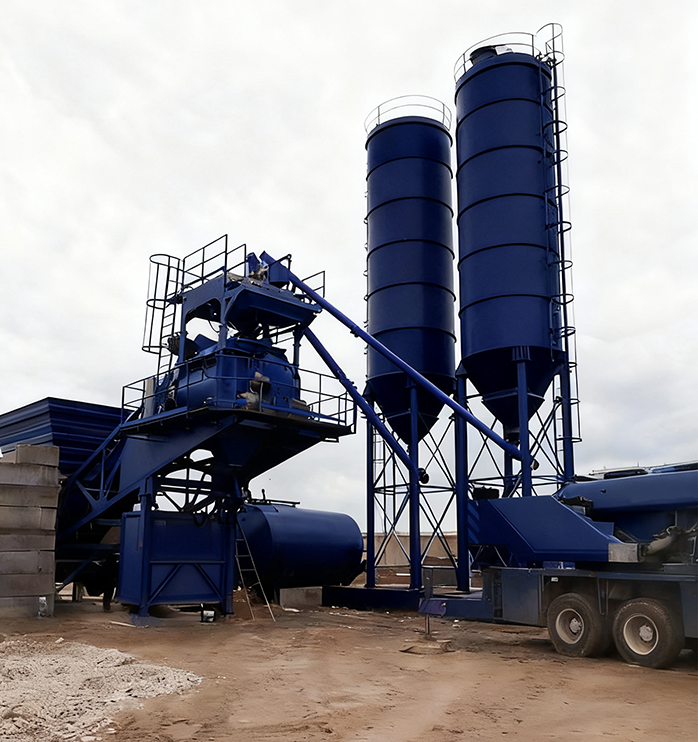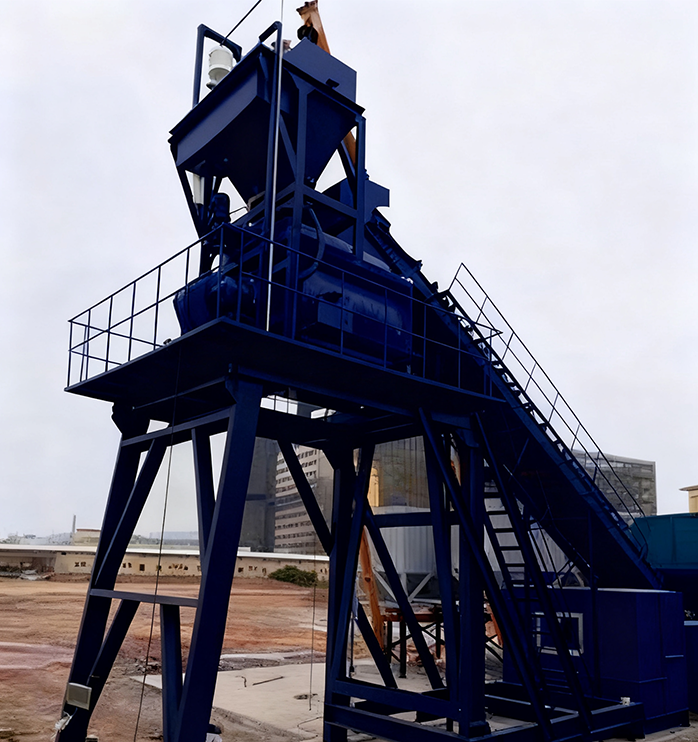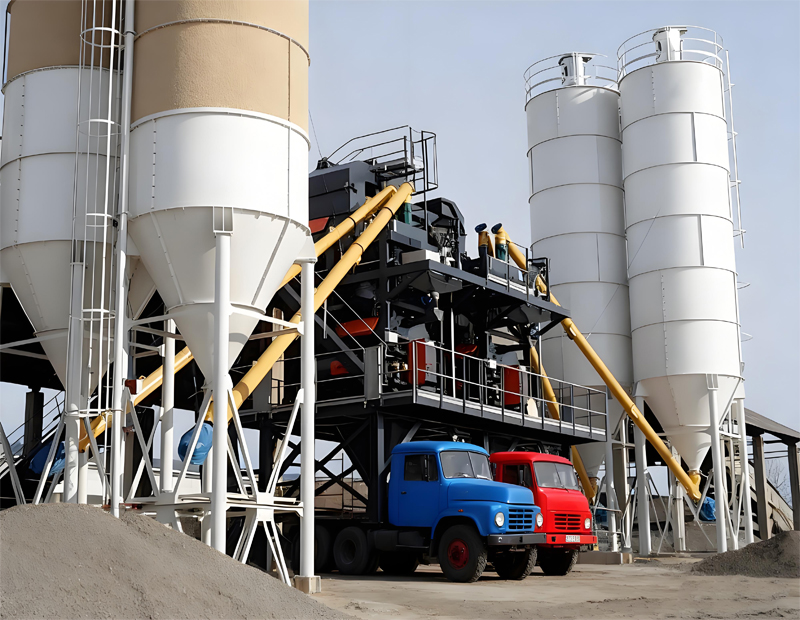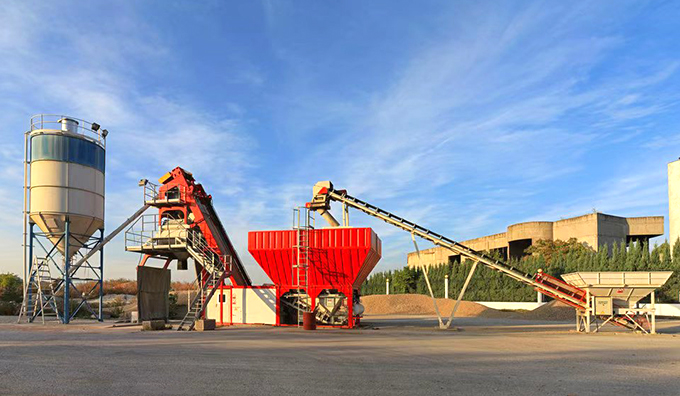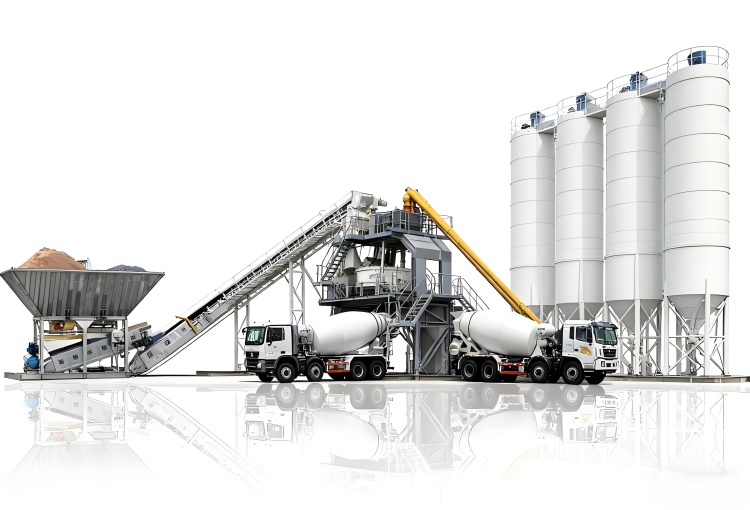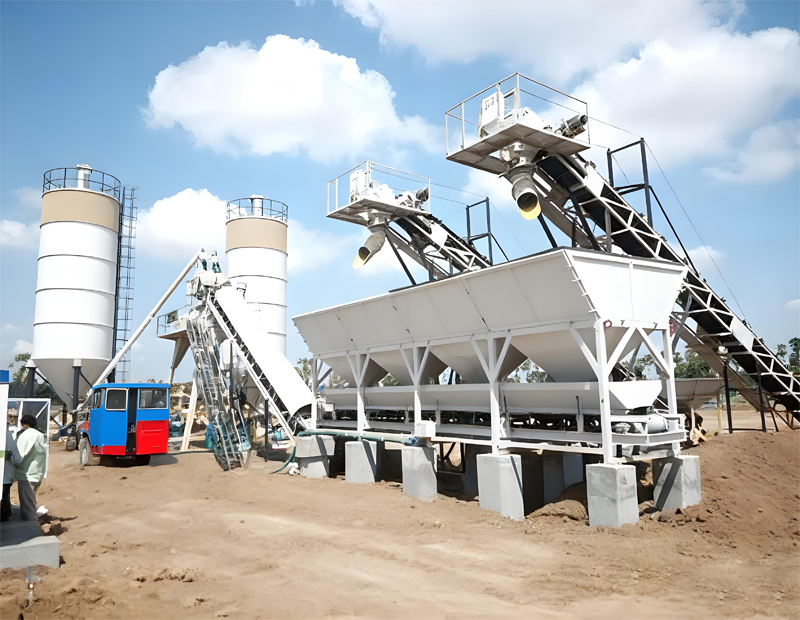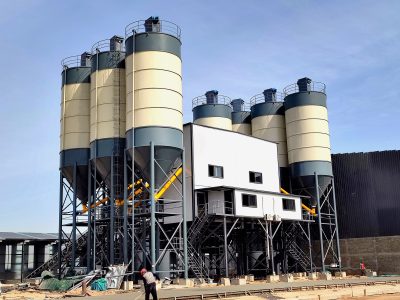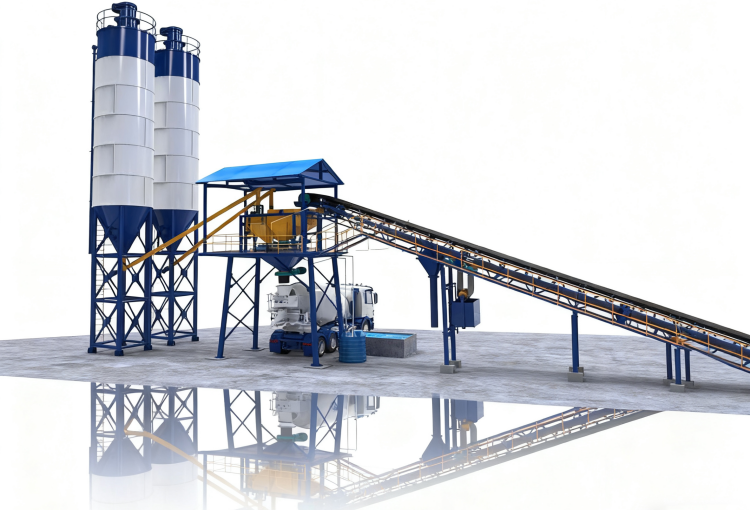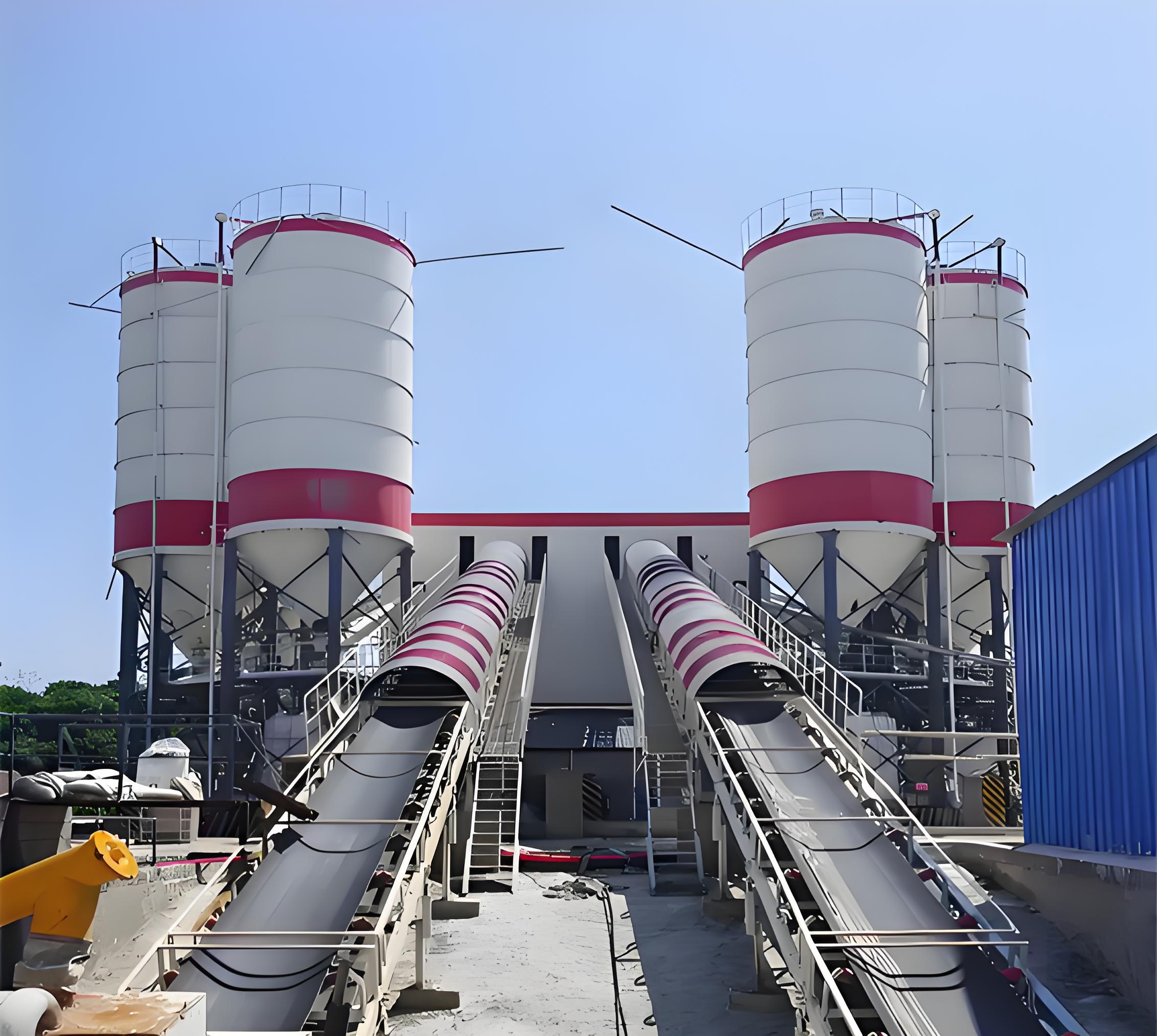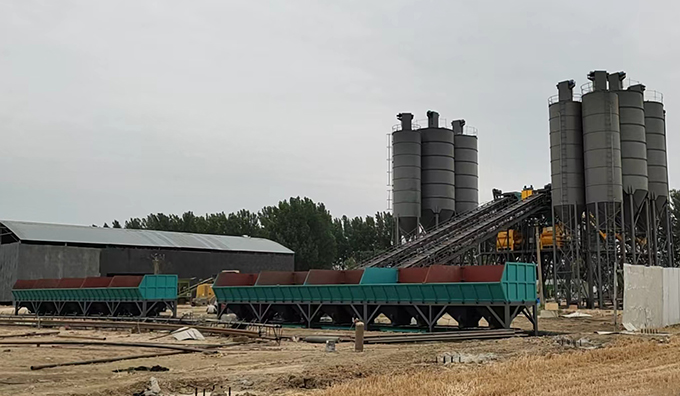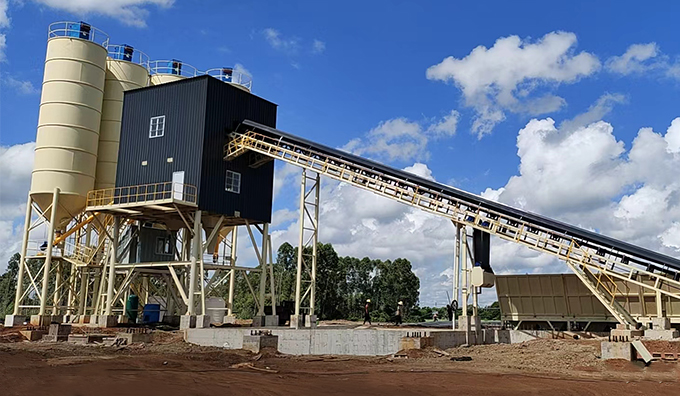What Is the Cost of a Concrete Batching Plant? 2025 Complete Price Guide & Cost-Saving Tips
If you’re planning to invest in a concrete batching plant, you’ve likely noticed a huge price gap—from $20k to $500k or more. This confusion often leaves engineers, contractors, and project managers stuck: How do you know you’re not overpaying, or sacrificing quality for a low upfront cost?
The truth is, there’s no “one-size-fits-all” price for a concrete batching plant. Its cost depends on your project’s unique needs: how much concrete you need per hour, whether you need mobility, and what level of performance or automation you require.
In this guide, we’ll break down exactly what drives concrete batching plant prices, share real 2025 price ranges for different types of plants, uncover hidden costs you might miss, and give you proven strategies to keep your budget on track. By the end, you’ll be able to calculate your needs accurately and make a purchase that balances cost and long-term value.
To budget wisely, you first need to understand what’s behind the price tag. These five factors are the biggest drivers of cost—and they’ll help you match a plant to your project, not just pick the cheapest option.
Capacity (measured in cubic meters per hour, or m³/h) is the single biggest factor in base price. Here’s how it works:
- Small plants (≤50m³/h): Models like HZS25 or YHZS35 are designed for small-scale work—think rural house building, local road repairs, or small commercial projects. Every jump in capacity (e.g., from 25m³/h to 50m³/h) adds roughly 40%-60% to the base price.
- Medium plants (50-120m³/h): Models such as HZS60 or HZS90 handle mid-sized projects like bridge construction, prefabricated component factories, or regional commercial developments. They’re built for consistent, daily use, so their price rises sharply with capacity.
- Large plants (≥150m³/h): Models like HZS150 or HZS180 are for high-volume work—commercial concrete supply yards, large infrastructure projects (e.g., highways, dams), or cities with booming construction. Their price can exceed $500k because they’re built for non-stop operation and maximum efficiency.
Your project’s location and mobility needs will decide whether a mobile or stationary plant is better—and each affects cost differently:
- Stationary plants: These need permanent concrete foundations, which adds upfront cost (20%-30% more than a mobile plant of the same capacity). But they’re more efficient: they use less energy, require less maintenance, and last longer (10-15 years vs. 8-12 for mobile). They’re ideal if your project is in one place for 2+ years (e.g., a housing development or factory construction).
- Mobile plants: They come with an integrated chassis, so no foundation is needed—great for road repairs, remote rural projects, or jobs that move every few months. Initial costs start as low as $30k, but frequent transport adds costs (tractor rental is $1k-$2k per move), and moving wears down parts faster (maintenance costs are 15%-20% higher than stationary).
- Dry mix vs. wet mix: Dry mix plants cost 15%-25% less than wet mix plants, but they require on-site water tanks and mixing. They’re a good fit for arid areas where water is scarce, while wet mix plants are better for projects needing consistent, ready-to-use concrete (e.g., high-rise buildings).
The parts of your plant directly impact performance—and cost. Here’s how to prioritize:
- Mixing host: Twin-shaft compulsory mixers (e.g., JS750) cost 30% more than single-shaft models, but they mix concrete more evenly (critical for high-grade concrete like C40 or C50) and break down 40% less often. If you’re working on projects with strict concrete quality standards, this upgrade is worth it.
- Metering system: Electronic weighing systems (accuracy ±1%) add $5k-$10k, but they reduce raw material waste by 2%-3%. For a medium plant making 720m³/day, that’s 14-21m³ less cement/sand wasted daily—enough to save $500-$800 per week.
- Automation: PLC fully automatic systems (with remote monitoring) cost $12k-$20k more than semi-automatic, but they cut labor needs by 3-5 people. If you pay operators $2k/month each, you’ll recoup the cost in 1-2 years.
- Environmental add-ons: Cold regions need insulation and heating (adds 10%-15% to cost), while urban areas require dust collectors (adds $8k-$15k). These aren’t optional—they keep you compliant with local laws and avoid fines.
Where you buy your plant (and the brand) affects both cost and reliability:
- Imported vs. domestic: European or American brands cost 50%-100% more than top Chinese brands (e.g., Camelway, Haomei), but they last 2-3 years longer. If your project runs for 10+ years, imports might save money long-term. For shorter projects (3-5 years), domestic brands offer better value.
- Local vs. distant suppliers: Buying from a local supplier saves $3k-$15k in shipping. If you’re in a remote area (e.g., rural Africa or Southeast Asia), distant suppliers may add 20% to the price for logistics. Also, buy during off-seasons (winter in temperate regions)—prices drop 10%-15% when demand is low.
- A “bare machine” price might seem cheap, but missing services will cost you more later:
- Installation & commissioning: Quotes with installation cost 8%-12% more, but incorrect installation can break parts (repair costs up to 20% of the plant’s price). Always include this.
- Warranty: A 3-year warranty adds 5%-8% to cost, but it covers wearing parts (mixing blades, seals) that need replacement every 6-12 months. Without it, you’ll spend $3k-$8k/year on parts.
- Training: Operator training ($1k-$3k) reduces downtime by 15%—a medium plant losing 1 day of production costs $36k (720m³ × $50 profit/m³). This small investment avoids big losses.
Here are real, up-to-date price ranges to help you budget. All prices include basic installation (but not shipping or local taxes).
- Typical models: HZS25, YHZS35
- Types: Mobile or stationary
- 2025 price range: $22k-$85k
- Best for: Rural housing, small road repairs, community centers, or projects where you need <300m³ of concrete per day.
- Example: A YHZS35 mobile plant ($38k-$48k) is perfect for a local contractor building 5-10 houses—no foundation needed, and it can move to the next site easily.
- Typical models: HZS60, HZS90
- Types: Mostly stationary (mobile options are rare and more expensive)
- 2025 price range: $89k-$200k
- Best for: Bridge construction, prefabricated component factories, regional commercial buildings, or projects needing 300-900m³ of concrete per day.
- Example: An HZS90 stationary plant ($120k-$150k) works for a company supplying concrete to a 10-story apartment building—it’s efficient enough to keep up with daily demand and low-maintenance.
- Typical models: HZS150, HZS180
- Types: Stationary, fully automatic
- 2025 price range: $200k-$500k+
- Best for: Commercial concrete yards, highways, dams, or cities with high construction demand (needing 900+m³ of concrete per day).
- Example: An HZS180 plant ($350k-$450k) is for a national concrete supplier—its fully automatic system runs 24/7, and it can supply multiple large projects at once.
- 30m³/h: Mobile ($38k-$48k) vs. Stationary ($30k-$40k). Mobile saves $5k-$8k on foundations but costs more upfront. If you move the plant 3+ times, the mobile’s transport costs will erase the foundation savings.
- 90m³/h: Mobile ($86k-$155k) vs. Stationary ($75k-$120k). Stationary uses 10%-15% less energy—for 8 hours/day, that’s 168-252kw saved daily, cutting electricity costs by $20-$35/day. You’ll recoup the price gap in 2-3 years.
- Price advantage: A used plant (3 years old or less, well-maintained) costs 50%-70% of a new one. For example, a used HZS60 (2 years old) is $40k-$60k vs. $89k-$110k new.
- Key risks to check:
- Operating hours: Avoid plants with >10,000 hours—parts like the mixing host will need replacement soon ($15k-$30k).
- Maintenance records: Ask for service logs—no records mean you don’t know if critical parts (like the metering system) were cared for.
- Warranty: If the original warranty has 1+ year left, it’s safer—you’ll be covered if something breaks.
- Tip: Reserve 20% of the used plant’s price for renovations (e.g., new seals, updated wiring) to avoid unexpected costs.
Most buyers only plan for the plant’s price—but these hidden costs can add 30%-50% to your total investment. Don’t miss them:
- Site preparation: Stationary plants need hardened ground ($8k-$20k per acre) and raw material silos ($12k-$30k). Mobile plants need a level gravel pad ($2k-$5k) but no silos (they use portable bins).
- Permits: Environmental 备案 (filing) and special equipment licenses cost $2k-$8k in developing countries, and $5k-$15k in Europe/US. Delays from missing permits can cost $1k-$2k/day in project hold-ups.
- Utilities: You’ll need a 380v power supply (for medium/large plants) and a water line. Upgrading utilities costs $3k-$10k, depending on how far the site is from existing infrastructure.
- Raw materials: Cement ($35-$45/m³) and sand/gravel ($15-$25/m³) make up 70% of operating costs. For a 90m³/h plant running 8 hours/day, that’s 720m³/day—$32,400-$43,200 in raw materials weekly.
- Energy: A 90m³/h plant uses 210kw/hour—electricity costs $25-$40/hour, or $200-$320/day for 8 hours.
- Labor: A small plant needs 2-3 operators ($2k-$3k/month each); a large fully automatic plant needs 1-2 technicians ($3k-$4k/month each).
- Maintenance: Routine service (oil changes, filter replacements) is $1k-$2k/month. Emergency repairs (e.g., a broken mixing blade) cost $10k-$20k each—plan for 2-3 emergencies per year.
- Depreciation: Plants lose value over time—after 10 years, their residual value is 5%-10% of the original price. For a $200k large plant, that’s $18k-$19k in depreciation annually.
- Downtime loss: Every day a plant is down, you lose money. A medium plant (90m³/h) makes $50/m³ profit—1 day of downtime = 720m³ × $50 = $36k lost.
- Upgrades: After 5-7 years, you may need to update the automation system ($8k-$15k) or replace the mixing host ($15k-$30k) to keep up with new standards.
You don’t have to overpay to get a reliable plant. Use these strategies to cut costs while keeping performance high:
The biggest mistake is buying a larger plant than you need. Here’s how to calculate your required capacity:
- Formula: Required capacity (m³/h) = Daily concrete demand ÷ Daily working hours × 1.2 (redundancy).
- Example: If your project needs 300m³/day, and you work 8 hours/day: 300 ÷ 8 × 1.2 = 45m³/h.
- Why this works: The 1.2 redundancy accounts for small delays (e.g., raw material delivery issues). Buying a 45m³/h plant instead of 60m³/h saves $20k-$30k upfront—and uses less energy long-term.
Not every upgrade is worth it. Focus on parts that affect quality and cost:
- Must-have: Twin-shaft mixer (for quality concrete) and electronic metering (to reduce waste).
- Can skip (for now): Fully automatic control—you can add it later for 10% less than the initial cost.
- Environmental add-ons: Only buy what’s required by local law. If your area doesn’t have strict dust rules, a basic dust collector is enough (save $5k-$8k on a high-end model).
Middlemen add 15%-25% to the price. Instead:
- Buy from production bases: China (Shandong, Henan), Turkey, or India have large manufacturing hubs—direct orders save on markups.
- Ask for customization: Manufacturers can adjust the plant to use local raw materials (e.g., if your sand is coarser) for free or a small fee. This reduces waste and improves concrete quality.
- Bulk buy: If you need supporting equipment (e.g., cement silos, concrete trucks), buy them with the plant—manufacturers offer 5%-10% package discounts.
Service packages are negotiable—here’s how to save:
- Combine installation + training: Ask for a discount if you bundle both (e.g., 5% off instead of paying for each separately).
- Extend warranty later: Buy a 1-year warranty upfront, then extend to 3 years after 6 months (if the plant works well). This saves 2%-3% vs. buying a 3-year warranty upfront.
- Local service: If the manufacturer has a local partner, use their service instead of the manufacturer’s—local teams charge 20%-30% less for repairs.
We’ve helped hundreds of buyers budget for concrete batching plants—here are the questions we get most often:
-
-
Q: What’s the cheapest concrete batching plant I can buy?
A: A small mobile plant (25m³/h, basic configuration) costs $22k-$30k. It’s good for very small projects (e.g., building 1-2 houses), but don’t use it for high-volume work—its low capacity will slow you down.
-
Q: Why is a dry mix plant cheaper than a wet mix plant?
A: Dry mix plants don’t have a built-in water mixing system—you add water on-site. This makes them simpler (and cheaper) but less efficient. If you need concrete ready to pour immediately, a wet mix plant is better—even though it costs more.
-
Q: How much does it cost to run a concrete batching plant per month?
A: For a medium plant (90m³/h, 8 hours/day, 25 days/month):
- Raw materials: $144k-$192k
- Electricity: $5k-$8k
- Labor: $6k-$9k
- Maintenance: $1k-$2k
- Total: $156k-$211k/month.
-
Q: Is it better to buy new or used?
A: If you have a short project (1-3 years) and can find a well-maintained used plant, it’s better—you’ll save 30%-50%. If your project is 5+ years, buy new—you’ll avoid frequent repairs and get a longer warranty.
-
Q: What should I ask a supplier to avoid hidden costs?
A: Ask for a “turnkey price” that includes:

